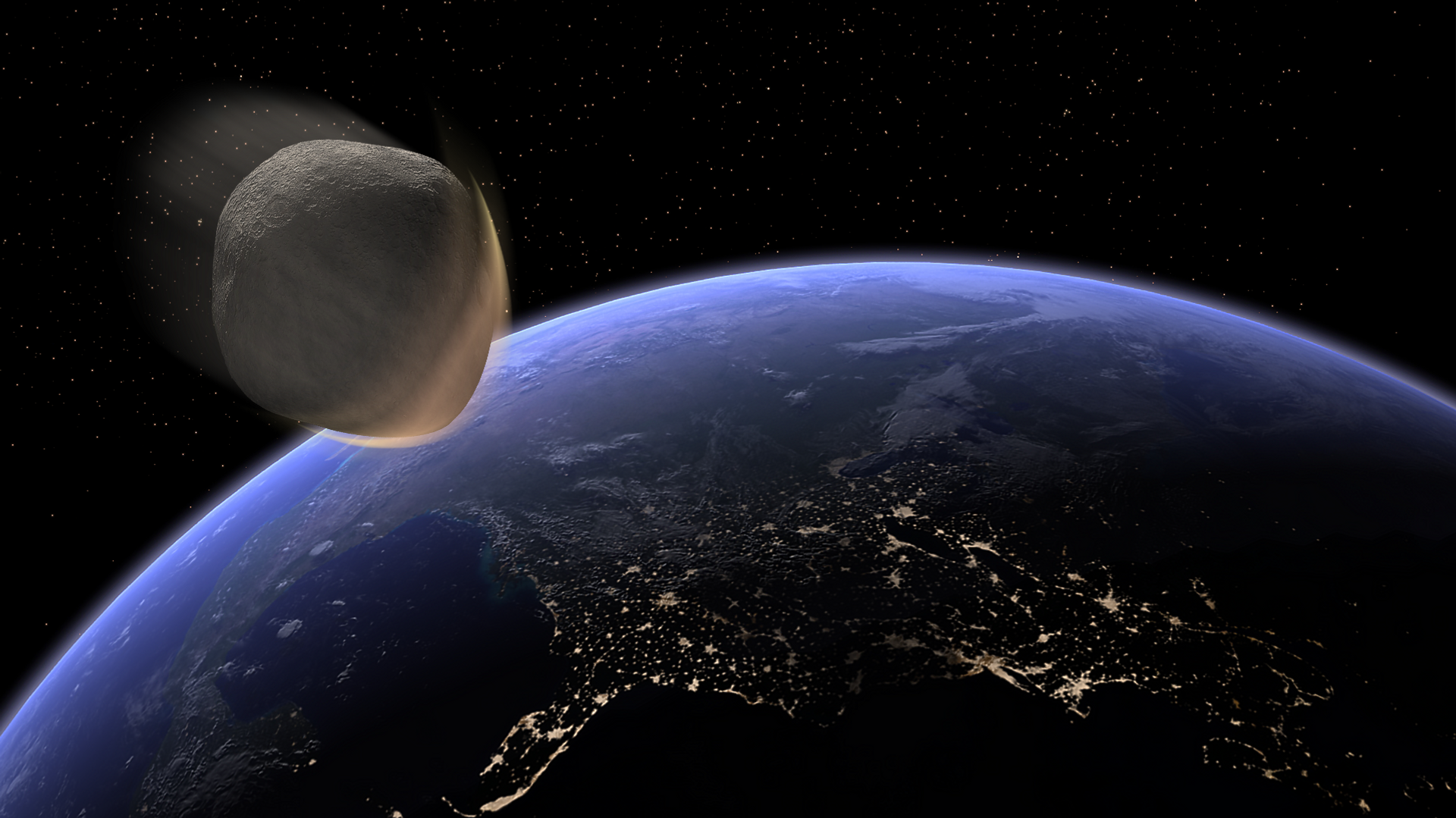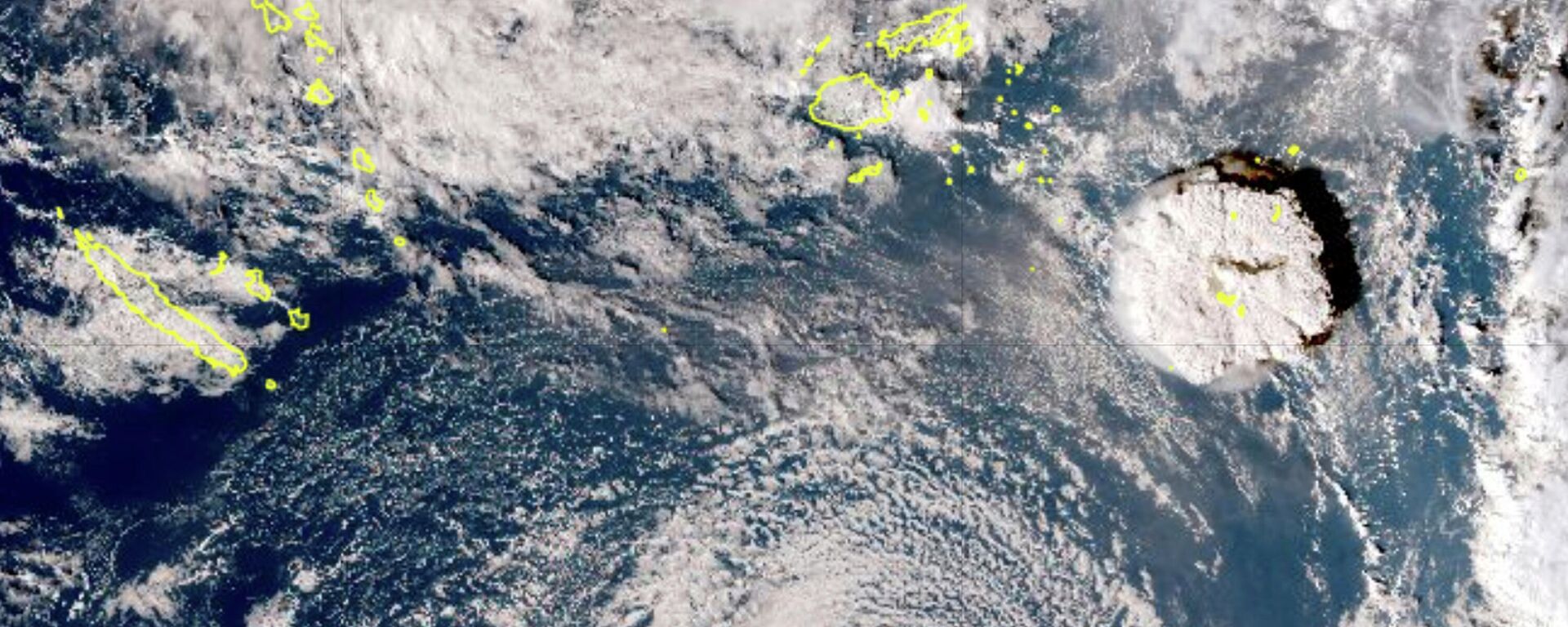https://sputnikglobe.com/20221020/asteroid-that-wiped-out-dinos-triggered-megatsunami-with-mile-high-waves-1102437121.html
Asteroid That Wiped Out Dinos Triggered ‘Megatsunami’ With Mile-High Waves
Asteroid That Wiped Out Dinos Triggered ‘Megatsunami’ With Mile-High Waves
Sputnik International
Sixty-six million years ago, the Chicxulub asteroid struck Earth in the Gulf of Mexico, just north of what’s now known as the Yucatan Peninsula. The city-sized... 20.10.2022, Sputnik International
2022-10-20T04:00+0000
2022-10-20T04:00+0000
2022-11-03T19:33+0000
science & tech
tsunami
study
university of michigan
gulf of mexico
yucatan peninsula
earth
https://cdn1.img.sputnikglobe.com/img/107903/04/1079030406_0:20:1917:1098_1920x0_80_0_0_d47917aecb9f82571e046371a906672e.png
Researchers at Purdue University used a three-dimensional computer program called a hydrocode to simulate the first minutes of the asteroid’s impact 66 million years ago, including the giant crater Chicxulub left behind and the start of the ensuing tsunami.When the asteroid hit, it set off a series of “cataclysmic” events including global temperature shifts, wildfires and soot-filled air. Similar to what happens when you throw a ball into a puddle or pond, debris sent into the atmosphere from the impact re-entered Earth’s atmosphere and “rained down,” compounding the destruction. Then, a few days later, a tsunami with thousands of times the energy of modern tsunamis covered the globe with waves reaching over a mile high.In what’s now the first-ever global simulation of the tsunami, scientists were able to use the hydrocode to reveal that the tsunami was powerful enough to wipe away the sediment record of everything before the event.Researchers believe that the asteroid impact was at least 100,000 times larger than the Tonga volcanic eruption, which was hundreds of times more powerful than the atomic bomb dropped on Hiroshima.Molly Range, lead author of the study who completed the findings as part of a master’s thesis at the University of Michigan, said that the ancient tsunami “was strong enough to disturb and erode sediments in ocean basins halfway around the globe, leaving either a gap in the sedimentary records or a jumble of older sediments.”Hydrocode, the computer program responsible for the simulation, was able to estimate that less than three minutes after the space rock landed in the Yucatan peninsula, rocks, sediments, and debris created a 2.8 mile high wave of water. They called this the “rim wave.”“If you just dropped a rock in a puddle, there’s that initial splash; that’s the rim wave,” Range explained.When this wave subsided, it created even more chaotic waves until eventually, 10 minutes after impact, a mile-high wave radiated in all directions across the ocean. “It had calmed down enough and the crater had formed,” Range said.After the hydrocode simulated the first 10 minutes of the tsunami, the scientists shifted to using a pair of models developed by the US National Oceanic and Atmospheric Administration to see how the tsunami operated in oceans across the globe.In addition to helping us piece together exactly how the dinosaurs met their end, the researchers said the findings offered insight into the geology of the Cretaceous period. Ted Moore, a co-author of the study, was able to find supporting evidence of their findings in sediment layers in the oceans’ plateaus at more than 100 different sites, adding confidence to their simulations.The team hopes to learn more in the future about how much flooding followed the tsunamis, and how far inland the tsunami’s effects could be felt.
https://sputnikglobe.com/20220515/tonga-volcano-eruption-caused-rare-atmospheric-waves-high-frequency-infrasound-study-reveals-1095522970.html
gulf of mexico
yucatan peninsula
earth
Sputnik International
feedback@sputniknews.com
+74956456601
MIA „Rossiya Segodnya“
2022
News
en_EN
Sputnik International
feedback@sputniknews.com
+74956456601
MIA „Rossiya Segodnya“
Sputnik International
feedback@sputniknews.com
+74956456601
MIA „Rossiya Segodnya“
science & tech, tsunami, study, university of michigan, gulf of mexico, yucatan peninsula, earth
science & tech, tsunami, study, university of michigan, gulf of mexico, yucatan peninsula, earth
Asteroid That Wiped Out Dinos Triggered ‘Megatsunami’ With Mile-High Waves
04:00 GMT 20.10.2022 (Updated: 19:33 GMT 03.11.2022) Sixty-six million years ago, the Chicxulub asteroid struck Earth in the Gulf of Mexico, just north of what’s now known as the Yucatan Peninsula. The city-sized space rock triggered a massive global tsunami that wiped out the dinosaurs. For the first time, scientists were able to simulate that Earth-shattering storm.
Researchers at Purdue University used a three-dimensional computer program called a hydrocode to simulate the first minutes of the asteroid’s impact 66 million years ago, including the giant crater Chicxulub left behind and the start of the ensuing tsunami.
When the asteroid hit, it set off a series of “cataclysmic” events including global temperature shifts, wildfires and soot-filled air. Similar to what happens when you throw a ball into a puddle or pond, debris sent into the atmosphere from the impact re-entered Earth’s atmosphere and “rained down,” compounding the destruction. Then, a few days later, a tsunami with thousands of times the energy of modern tsunamis covered the globe with waves reaching over a mile high.
In what’s now the first-ever global simulation of the tsunami, scientists were able to use the hydrocode to reveal that the tsunami was powerful enough to wipe away the sediment record of everything before the event.
Researchers believe that the asteroid impact was at least 100,000 times larger than the Tonga volcanic eruption, which was hundreds of times more powerful than the atomic bomb dropped on Hiroshima.
Molly Range, lead author of the
study who completed the findings as part of a master’s thesis at the University of Michigan, said that the ancient tsunami
“was strong enough to disturb and erode sediments in ocean basins halfway around the globe, leaving either a gap in the sedimentary records or a jumble of older sediments.”Hydrocode, the computer program responsible for the simulation, was able to estimate that less than three minutes after the space rock landed in the Yucatan peninsula, rocks, sediments, and debris created a 2.8 mile high wave of water. They called this the “rim wave.”
“If you just dropped a rock in a puddle, there’s that initial splash; that’s the rim wave,” Range
explained.
When this wave subsided, it created even more chaotic waves until eventually, 10 minutes after impact, a mile-high wave radiated in all directions across the ocean. “It had calmed down enough and the crater had formed,” Range said.
“The continents looked a little bit different,” she added. “Most of the East Coast of North America and the north coast of Africa easily saw 8 meter-plus waves. There was no land between North and South America, so the wave went into the Pacific.”
After the hydrocode simulated the first 10 minutes of the tsunami, the scientists
shifted to using a pair of models developed by the US National Oceanic and Atmospheric Administration to see how the tsunami operated in oceans across the globe.
In addition to helping us piece together exactly how the dinosaurs met their end, the researchers said the findings offered insight into the geology of the Cretaceous period. Ted Moore, a co-author of the study, was able to find supporting evidence of their findings in sediment layers in the oceans’ plateaus at more than 100 different sites, adding confidence to their simulations.
“We feel these deposits are recording the effects of the impact tsunami, and this is perhaps the most telling confirmation of the global significance of this event,” Range said.
The team hopes to learn more in the future about how much flooding followed the tsunamis, and how far inland the tsunami’s effects could be felt.


